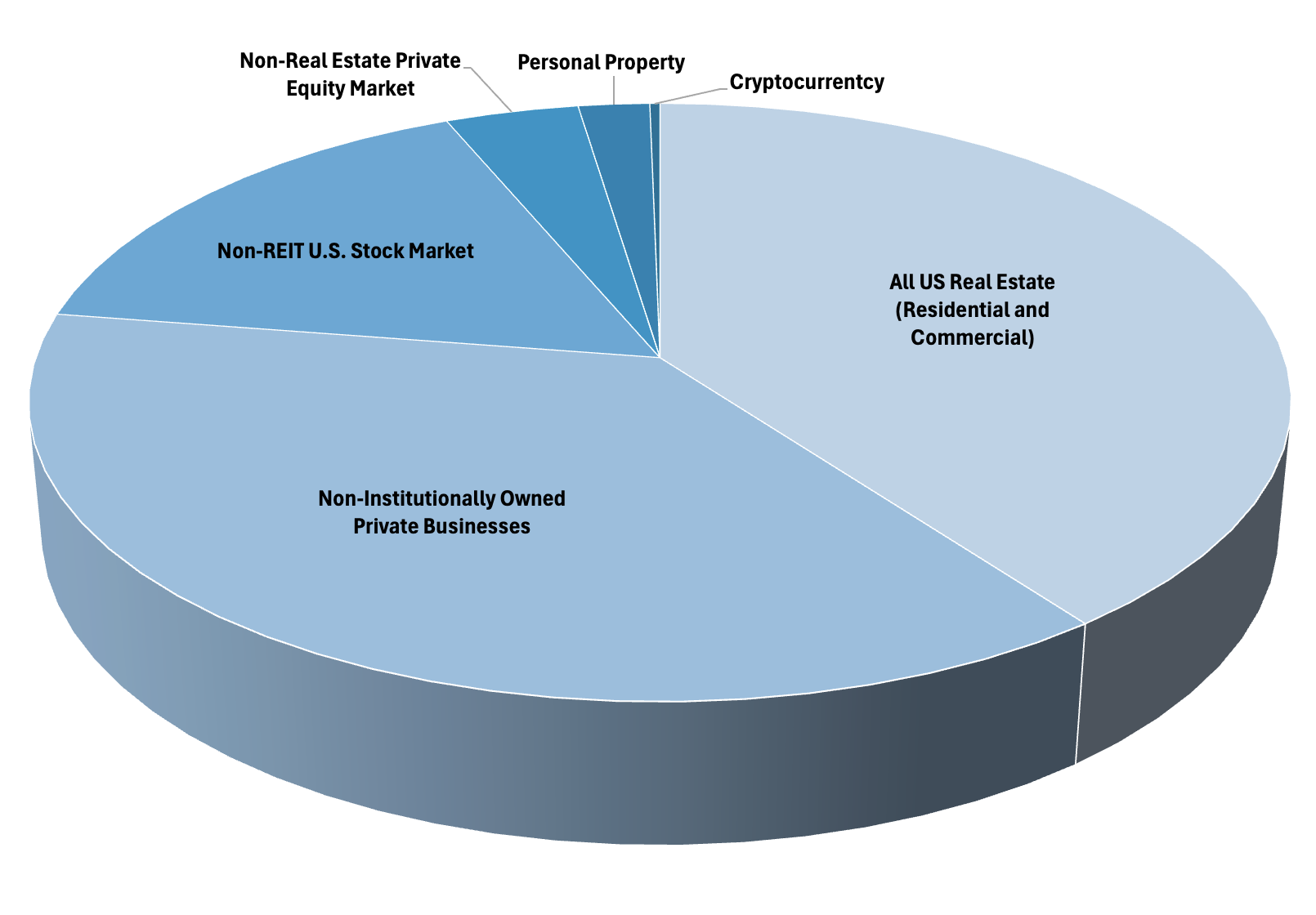Understanding the Sheer Scale of the Real Estate Market
We are big believers in the idea that “data will set you free,” or perhaps using more pedestrian language, data provides us with proper perspective. Considering how our news media organizes the information they convey to us, we often get a very skewed viewpoint of what may or may not be most important. For example, most newspaper business sections or business news networks spend the majority of their inches or broadcast time talking about the US Stock Market. In newsprint, you will often find a separate “real estate” section, which most often includes articles with splashy photos describing some luxury dream home that has just hit the market that 95% of Americans could never afford. Any serious reporting of the real estate market is relegated to the second to last page or a five minute segment within a 24 hour broadcast cycle. I have always found this strange considering the sheer size of the industry.
The US Real Estate industry currently sits at a market valuation of $132 trillion, and is the single largest industry by far. It makes up is nearly 40% of the entire US (non-governmental) economy and more than twice the size of the US Stock Market. The entire Cryptocurrency Market makes up only $1 trillion yet is discussed ad nauseam in our business news media. One can also make the case that Non-Institutionally Owned Private Businesses (often referred to as “mom and pop” also receive a fair amount of neglect, but that is an article for another time). Why do we believe this is the case? We believe it is primarily because publicly traded companies are required to disclose so much information makes them far easier to follow and report on. In addition, the fragmentation of the real estate market also makes connecting the story of a given developer, REIT or property owner to the reader that much more difficult. Whether you use their products or not, everyone knows of Apple. But very few readers have any knowledge or experience with Greystar, despite it being the largest owner of apartment units in the country. Why? Because even given its status as the largest, it owns (as of 2024) only 108,000 units amongst a market of ~39,000,000.
Commercial real estate at $20 trillion constitutes over half of the value of the entire US Stock Market. Yet how many stories on CNBC or Fox Business discuss the commercial real estate industry relative to all other sectors analyzed and discussed.
And this brings us to our final observation. We understand that industries which impact all citizens are, perhaps justifiably, more subject to media and political distortion. That said, the most common narrative embraced by both the left and the right when discussing residential real estate is the vilification of landlords. The most recent iteration of this false narrative was recently perpetuated by 60 Minutes, once a bastion for fact based investigative journalism. In this piece by Leslie Stahl, their entire arguement is debunked with only the slighted bit of research.
Lack of new construction and corporate landlords contributing to skyrocketing rent
While it is true that large private investment companies like Blackstone established single family for rent companies during the financial crisis, leveraging their stronger cash positions to scoop up tens of thousands of homes at prices far below what they were prior to the crash, these companies are miniscule when compared with the sheer size of the US residential market.
The US single family market consists of 147 million homes as of Q4 2024. Yet large commercial landlords own only a tiny fraction of these homes. The top ten landlords, one of whom was the subject of 60 Minutes ire in this hit piece, owns less than 0.3% of the housing market. Not 3%, less than 0.3%. The supposition that this or other similar firms could have such an outsized impact on the housing market is frankly laughable. In fact, 80% of homes in the single family for rent category are owned by companies that own only 1 to 9 units. In other words, small “mom-and-pop” individual investors, who likely use those homes for stabilized income as an alternative to a pension. Should we also attack them for “distorting the market.” And all single family homes for rent pale in comparison to the 102 million owner occupied single family homes in the market.
The fact of the matter is that the housing market is, wait for it, a market. Just like all other markets, investors, consumers, builders, owners and managers need to be free to acquire, reposition and ultimately enable fluidity to allow for fair pricing, income, profit or whatever each role might require. Should we require all single family homes be owner occupied as the 60 Minutes piece seems to suggest? If so, where would the millions of single family renters, many of whom are likely happy to be able to live in a single family home, go? Should they all be consigned to apartments or government subsidies housing projects? There is clear demand by a large segment of Americans to rent single family homes. Were it not for landlords, how would they be able to do so? Return to the “no doc” loans from before the financial crisis? It is really unfortunate that the media continues to find new ways to blame “greedy” landlords for the price of housing when it is a problem completely created by market distortions resulting from the policies and actions of politicians (who complain the loudest) and bureaucrats. We wish that the media would focus its attention on several of the true contributing factors of the high housing costs which prevents the free market from implementing much needed change.
Regulation Increases Housing Costs, New Study Finds




